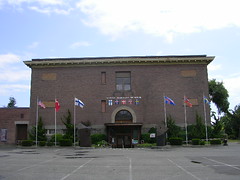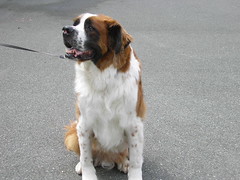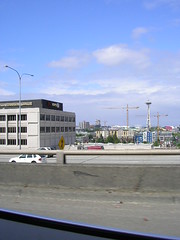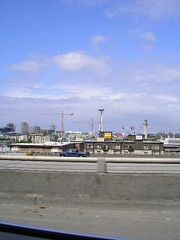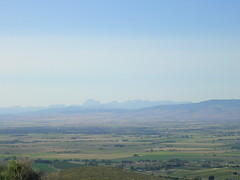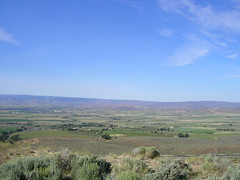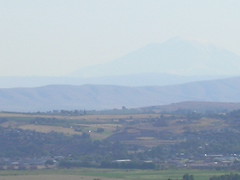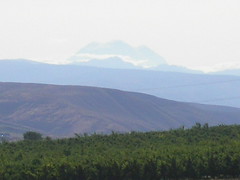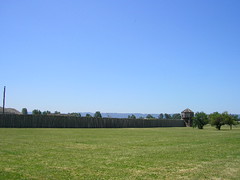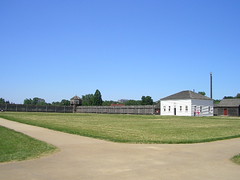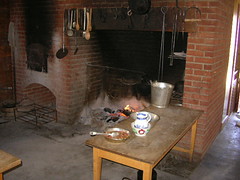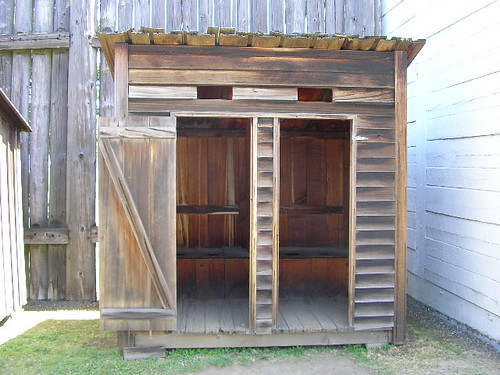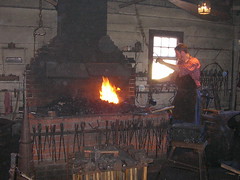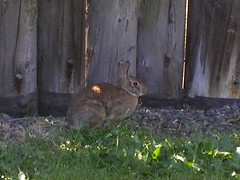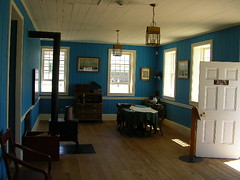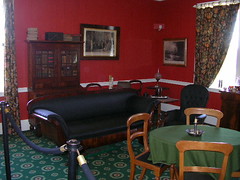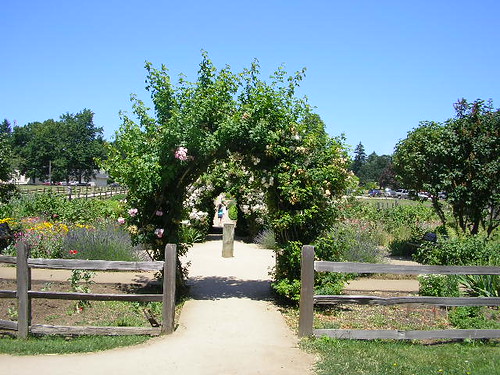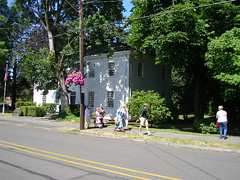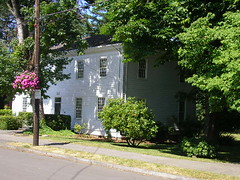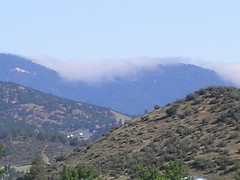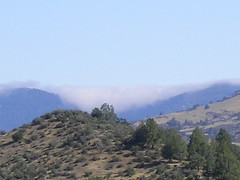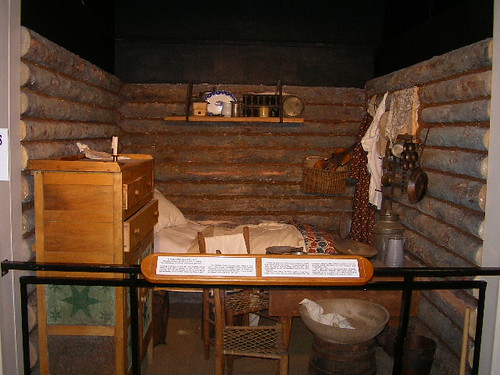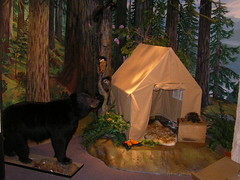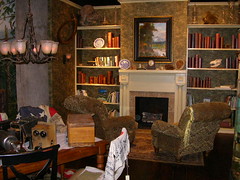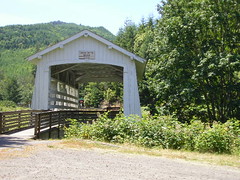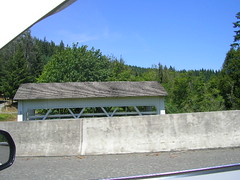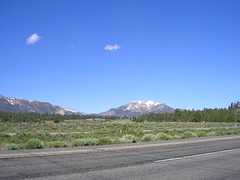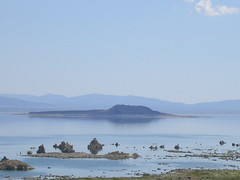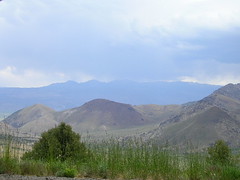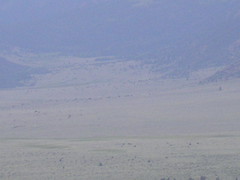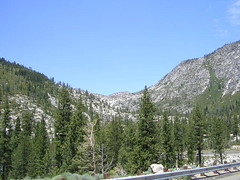Baker City is a rare gem, a small town that in spite of having the usual fast food and chain store offerings has also managed to keep a pretty well preserved historic center, with a Main Street that could compete for the title of Anywhere, USA of the 50s. Downtown is the surprisingly large Baker Heritage Museum, which has a very nice, very varied collection of local stuff - from old wagons and cars to gems (it's an old mining town), guns, stuffed animals, old china, clothes, fun old commercial posters, etc, etc. The place has lots of space, being a former indoor swimming pool, with a large ballroom upstairs. Sadly most such places have a strict no photo policy, so I can't show you any of it. Why they ban photos I don't get, because they almost never sell postcards or any other material based on their collections, so it's not like they're going to lose money if tourists take their own pics - on the contrary, I should think it would be good advertising to have people spread images all over the world. Meh.
About five miles north of town is the Oregon Trail Interpretive Center. As with most Federal sites, here you can click away to your greedy, little heart's desire. They have a very well made display series of life on the Trail with stories about a few of the hundreds of thousands who went west looking for land, gold, adventure or just a new life. They also have tons of info on the background for the migrations and the consequences. I highly recommend you do both the local and the federal museums.
Afterwards I went downtown again and took some pics of Main Street and then had lunch at the historic Geiser Grand Hotel, where the film crew and actors stayed while they shot Paint Your Wagon. I now regard myself an official cowboy, since I lunched on BUFFALO. Yes, good people - they had buffalo burger on the menu, and the child in me (never far from the surface) was bouncing with joy. In reality it didn't taste much different from ordinary meat - I understand its main quality is that it's leaner than cow, but I couldn't tell.
After Baker the landscape again remains fairly dull all the way to the Idaho border, where I am now, in a little place called Ontario. I've just returned from seeing the new Transformers movie at a local theatre, and while the film itself is forgettable, I hereby decree Megan Fox the hottest woman in The Known Universe. Tomorrow I will enter my new state #3 and my 46th state overall. Wheee!
Little did he know I was about to have his descendant for lunch.

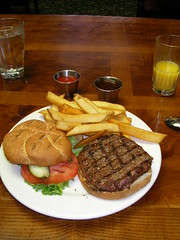
In the hills around the Interpretive Center you can still see the tracks the wagons made. In the distance are the Blue Mountains, while Baker City is hidden behind the hill on the left.

I've praised the quality of US museums before and this was no exception. The display invites you to reflect on what actually happened and makes it come alive. Here kids can fill their own wagon - they have the total capacity and the weight of each item. What will you take, what will you have to leave behind? History, math and economics in one lesson!
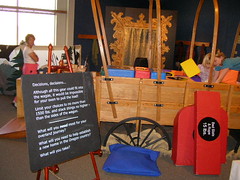

Indoors and outdoors displays
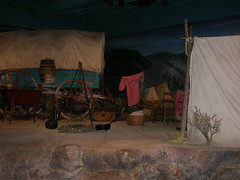
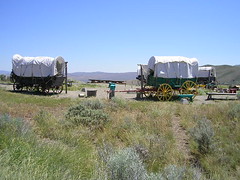
The Heritage Museum and a side street off of Main.
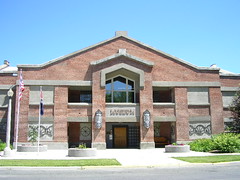

And old bookshop (the text at the top says the building is from 1888) and the art deco Baker City Tower, which is the tallest building in eastern OR.
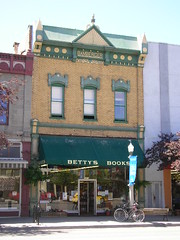

The exterior and interior of the Geiser. Friendly and professional staff - they served me lunch 15 mins after they were supposed to have stopped.
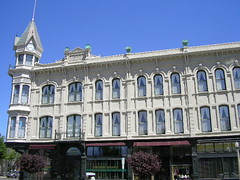

More landscape, museum and city photos here.
